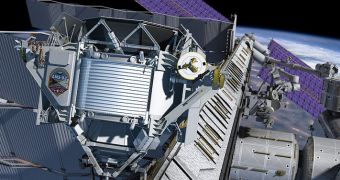The space shuttle Endeavor is well on track to launching towards the International Space Station (ISS) this Friday, on the same day of the British Royal Wedding. The spacecraft is looking good for an April 29 take-off date, and NASA officials say that the weather forecast is also encouraging.
Weather officers at the Kennedy Space Center (KSC) say that there is only a 20 percent chance that winds or rain will not cooperate with the efforts. Endeavor is getting ready to launch on its final mission ever – a flight called STS-134.
At this point, experts say, crosswinds at the Launch Pad 39A facility are the primary weather-related concerns. However, there is a good chance that the orbiter will be able to take off at 3:47 pm EDT (1947 GMT), as planned.
For this particular mission, the shuttle will carry about 14,000 pounds (about 6,350 kilograms) of supplies, spare parts and scientific experiments for the space station. In addition, it will also deliver the Alpha Magnetic Spectrometer (AMS) particle detector to the orbital lab.
The $2 billion scientific experiment is designed so that it can identify antimatter concentrations in the Universe. Physicists are also hopeful that they will be able to use it to analyze dark matter and its constituents. This has never been done before.
Dark matter is a hypothesized form of matter, whose existence has yet to be proven. It is believed to interact with normal (baryonic) matter only through the force of gravity. The fact that it exists is inferred from the way visible matter in distant galaxies behaves.
“It took 17 years and 600 physicists from 16 countries to get this far – it's been a major international effort. We've checked and rechecked everything to make sure it's right. Now we're just waiting to launch it,” said AMS principal investigator and Nobel laureate Samuel Ting.
“This is the first time we will study cosmic rays in space over a long duration with very high accuracy, so we're entering a new area where we really do not know what we will find,” he adds. The AMS is expected to remain operational until around 2020, Space reports.
Getting everything ready in time for Endeavor's launch was a challenge, especially considering that it was only last year that the large magnet on the AMS – the instrument's core – was changed to a different one.
Now, all that is left is for Endeavor to launch successfully, and to reach the ISS on Sunday. The six-astronaut crew aboard is expected to spend about 14 days in orbit, carrying out four spacewalks and two heatshield inspection maneuvers.
Upon its return, the orbiter will be decommissioned, and then sent to the California Science Center near Los Angeles for permanent display.

 14 DAY TRIAL //
14 DAY TRIAL //